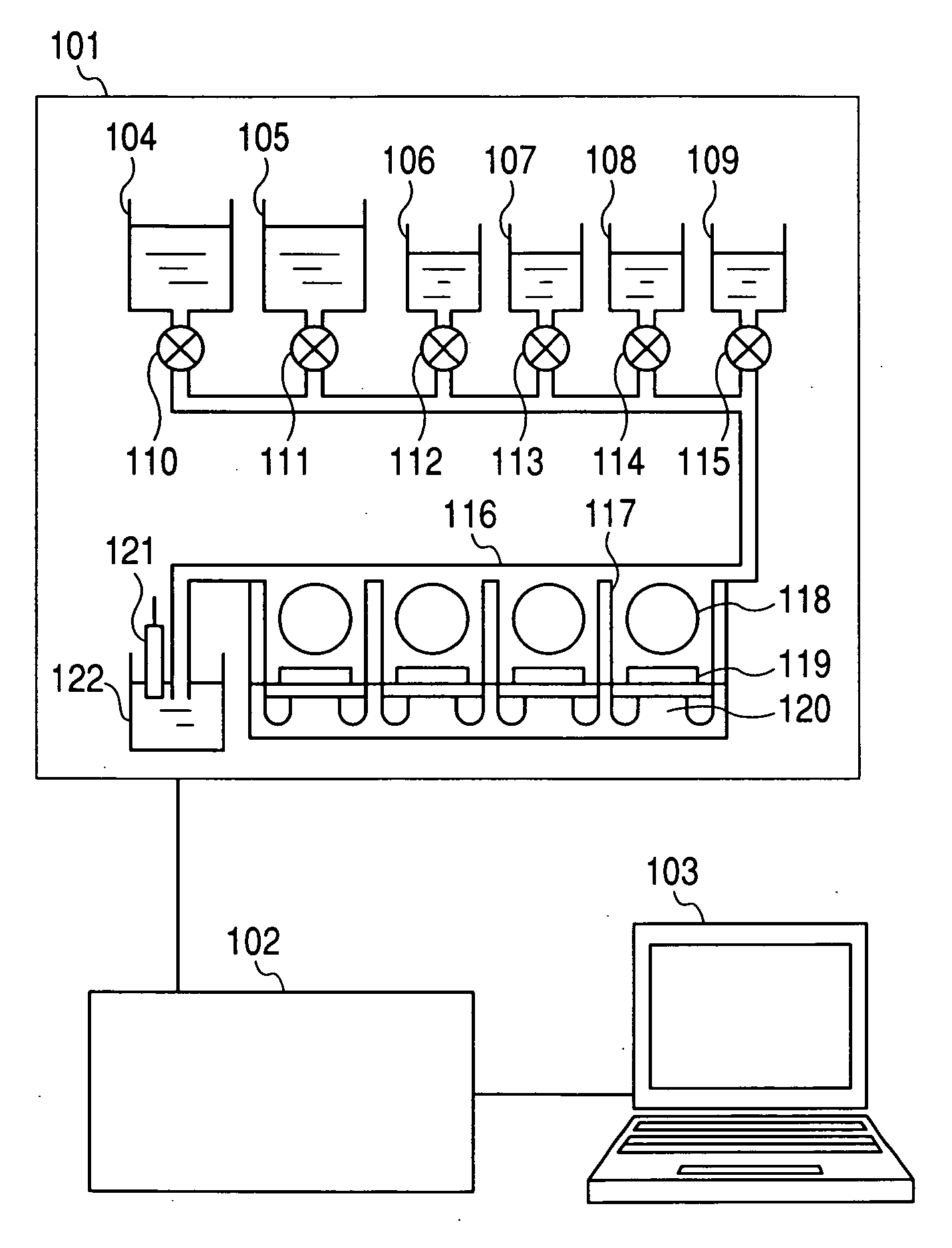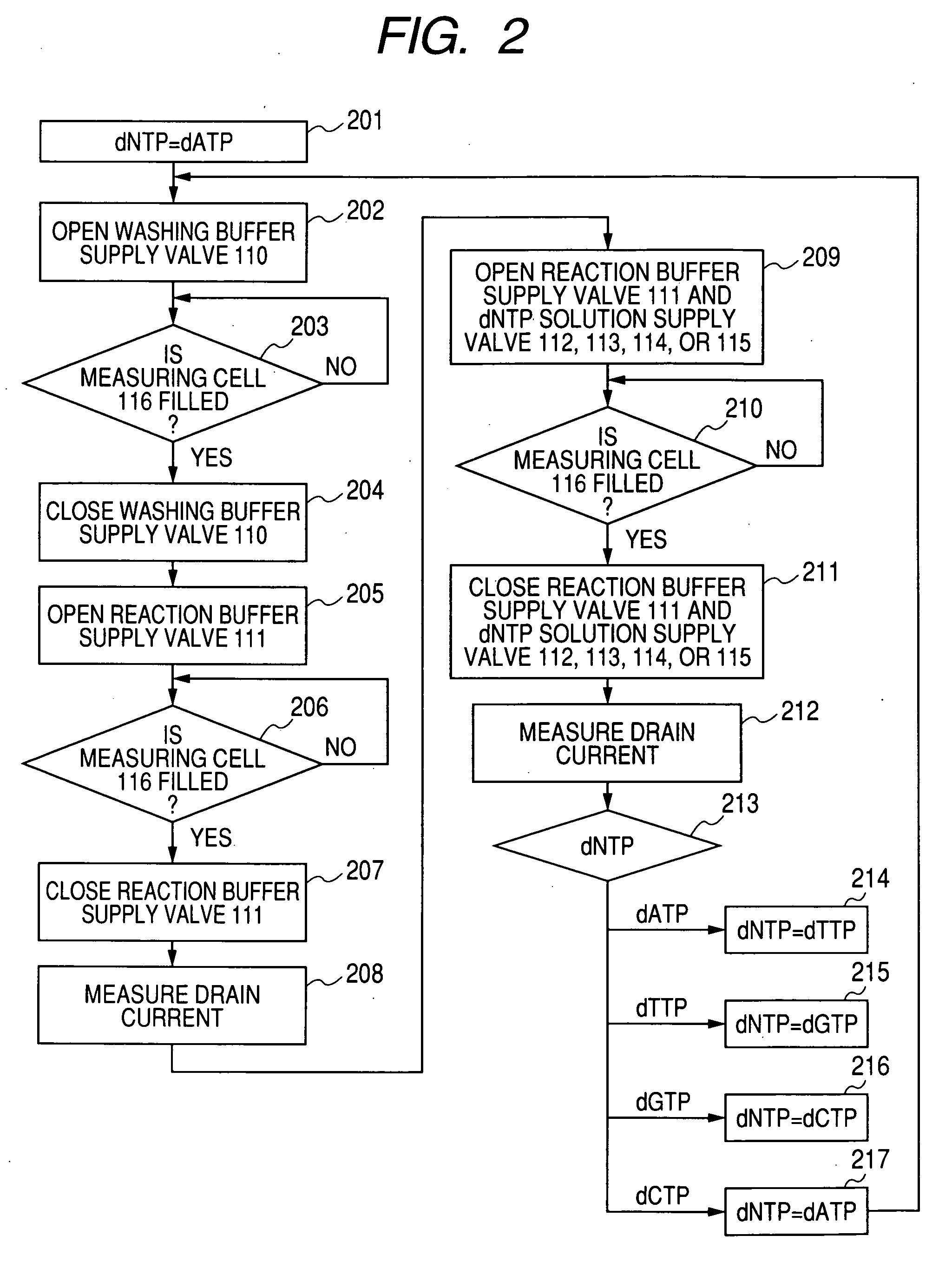DNA analysis method and DNA analyzer
a technology of dna analysis and analyzer, which is applied in the direction of machine/engine, liquid/fluent solid measurement, biomass after-treatment, etc., can solve the problems of increasing the size and cost of the entire system, reducing detection sensitivity, and requiring expensive detectors, so as to reduce the diameter of beads and increase the density. , the effect of reducing the diameter of the beads
- Summary
- Abstract
- Description
- Claims
- Application Information
AI Technical Summary
Benefits of technology
Problems solved by technology
Method used
Image
Examples
Embodiment Construction
[0027]Some embodiments of the present invention will be illustrated below with reference to the attached drawings.
[0028]FIG. 1 is a block diagram illustrating a nucleic acid sequence analysis system according to an embodiment of the present invention. The analysis system according to this embodiment includes a measuring unit 101, a signal processing circuit 102, and a data processor 103. The measuring unit 101 includes a washing buffer vessel 104, a reaction buffer vessel 105, a dATP solution vessel 106, a dTTP solution vessel 107, a dGTP solution vessel 108, a dCTP solution vessel 109, a washing buffer supply valve 110, a reaction buffer supply valve 111, a dATP solution supply valve 112, a dTTP solution supply valve 113, a dGTP solution supply valve 114, a dCTP solution supply valve 115, a measuring cell 116, separators 117, beads 118, measuring electrodes 119, field-effect transistors 120, a reference electrode 121, and a discharge liquid vessel 122. The supplies of the respectiv...
PUM
| Property | Measurement | Unit |
|---|---|---|
| Concentration | aaaaa | aaaaa |
| Specific surface area | aaaaa | aaaaa |
| Interface potential | aaaaa | aaaaa |
Abstract
Description
Claims
Application Information
 Login to View More
Login to View More - R&D
- Intellectual Property
- Life Sciences
- Materials
- Tech Scout
- Unparalleled Data Quality
- Higher Quality Content
- 60% Fewer Hallucinations
Browse by: Latest US Patents, China's latest patents, Technical Efficacy Thesaurus, Application Domain, Technology Topic, Popular Technical Reports.
© 2025 PatSnap. All rights reserved.Legal|Privacy policy|Modern Slavery Act Transparency Statement|Sitemap|About US| Contact US: help@patsnap.com



